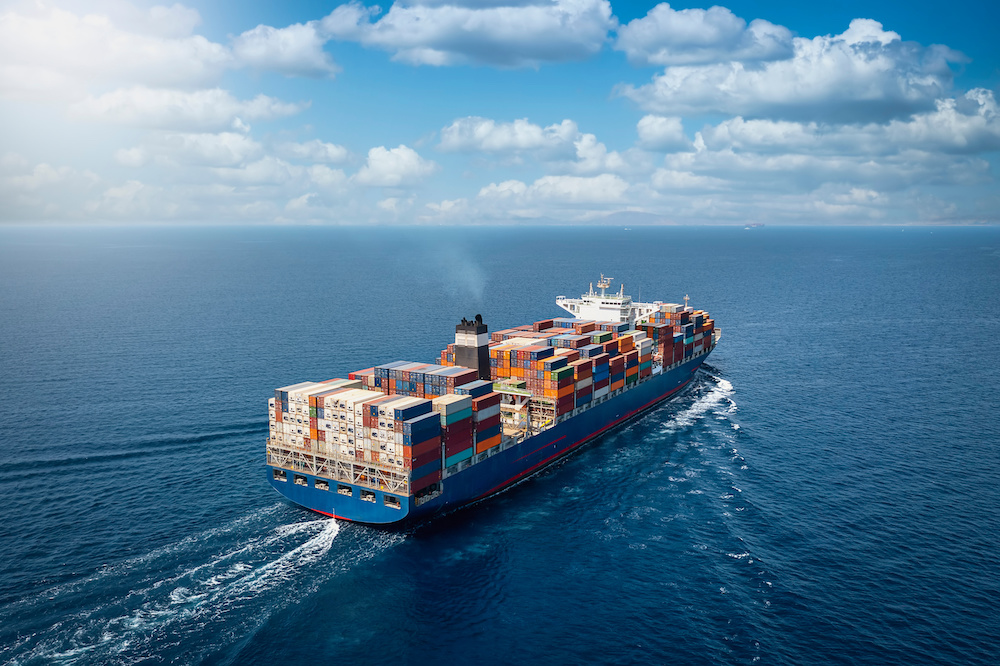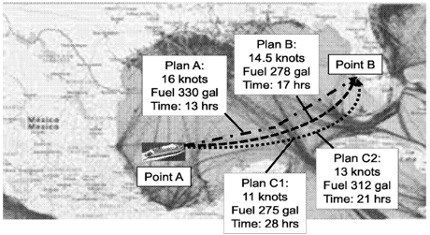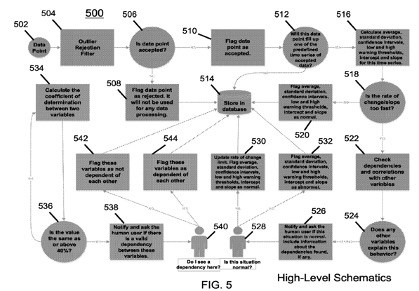 Russell Edson Partner, Withers & Rogers
Russell Edson Partner, Withers & Rogers

The global cargo shipping industry has set its focus for the foreseeable future on alternative, green energy sources to reduce its carbon footprint. As hybrid, methanol and hydrogen power will take time to roll out across the industry, there is a need for intermediate solutions. Most current cargo ships are reliant on diesel power and solutions are needed now to improve their operational efficiency and reduce their carbon footprint.
It is generally true that a vessel is most efficient when its operating parameters, such as speed and direction of travel, are optimised and its onboard systems are fully functional.
Operating parameters can be optimised by considering the strength and direction of ocean currents as well as the speed and direction of the wind. Monitoring weather conditions along the vessel’s chosen route means its speed and heading can be adjusted to improve fuel efficiency. For example, it may be more efficient to sail a slightly longer route that has more favourable conditions, rather than the shortest route if there are likely to be strong currents and headwinds to contend with.
Ensuring the ship’s systems are functioning properly can improve a vessel’s overall performance. For example, its systems could have literally thousands of parameters or variables making it difficult for the operator to monitor them all. This can result in an operator reacting to a problem after the event, potentially leading to some loss of functionality and reduced fuel efficiency. Enhanced monitoring is needed to avoid such situations and ensure the vessel’s performance is always optimised.
In 2020 Marine Technologies filed an international patent application, which was published under number WO2021016603A1, for an innovative advisory system designed to optimise fuel consumption and improve operational efficiency. A UK patent for the technology was granted on 4 July 2023 under number GB2600588B.

Figure 13 (above) from the patent application shows a waterway with multiple routes a vessel could take to get from point A to B. The routes are planned by the system using real-time weather and fuel consumption data. The operator can then select the optimal route, or the system can be pre-programmed to select it autonomously as required. Crucially, the system is designed to respond to live updates; ensuring that the vessel gets to its destination as safely and efficiently as possible.

Figure 5 (above) demonstrates another feature of the technology – a machine learning advisory system for identifying and managing faults. The innovative advisory system is able to monitor and alert a user to abnormalities affecting engines, as well as electrical, mechanical, electromechanical, hydraulic and communication systems. Based on this real-time information, the advisory system flags opportunities to optimise the vessel’s operational efficiency.
Using machine learning, the advisory system can also be trained to limit false notifications and minimise the need for operator intervention. For example, operators may receive alerts if the system is at risk of becoming overloaded. It will also provide reports about the performance of onboard systems and react to status information through the use of ‘traffic-light-style' indicators. In this way, the system can mitigate the risk of human error at the same time as ensuring the vessel’s operational efficiency is maintained.
Where necessary, the advisory system will require a human operator to take action. Such interventions could include asking the operator to confirm whether certain variables are related to each other. In this way, the advisory system learns by experience, so it can provide appropriate notifications and guidance when responding to the same or similar conditions in the future.
There are numerous benefits to this novel advisory system, which can help drive operational efficiency and reduce the carbon footprint of diesel-powered vessels. Protecting the technology behind the advisory system with an international patent application gives Marine Technology LLC a 20-year period of exclusivity during which to market its innovation globally. It also means competitors will be unable to copy its innovation without risk of being sued for alleged patent infringement. Obtaining a patent also helps underline the company’s frontline focus on innovation and solving issues affecting the global shipping industry.
Established in 1884, Withers & Rogers LLP is a leading European intellectual property (IP) firm providing expert advice on the protection and enforcement of IP rights particularly for inventions, designs and trade marks. Reflecting the firm's distinctive entrepreneurial personality, its patent and trade mark attorneys come with a depth of specialist understanding and pride themselves on helping businesses to commercialise their IP.
For more information, please visit: www.withersrogers.com